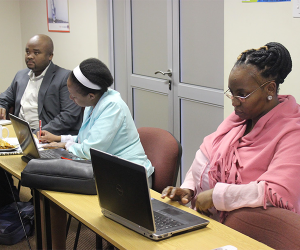 Perhaps one of the most important steps in fundraising is the development of a plan. Often your organization will see the intended results or impact of the work to be funded as sufficient for successful fundraising. Certainly a meaningful project (a more generalized term for the work to be done) is the reason your organization wants to raise money in the first place. However, it is the overall viability of your organization which guarantees the long-term success of the goal.
Perhaps one of the most important steps in fundraising is the development of a plan. Often your organization will see the intended results or impact of the work to be funded as sufficient for successful fundraising. Certainly a meaningful project (a more generalized term for the work to be done) is the reason your organization wants to raise money in the first place. However, it is the overall viability of your organization which guarantees the long-term success of the goal.
Many resources provide excellent information on how to develop plans for a specific campaign and/or for the organizations itself. (See bibliography.) The most straightforward plan is usually the most easily implemented. The Society for Non-Profits (SNPO) is one of many organizations offering courses online, webinars, newsletters, blogs, books, papers. While SNPO is based in the United States, its materials work in almost any organization globally.
A number of SNPO resources are offered freely online, including its Fundraising Guide, which includes ten chapters to review on a personal timetable. A chapter of particular assistance is Eight Steps to Effective Fundraising.
Key features include:
Step One
Identify Your Fundraising Specialist
The fundraising specialist can be a member of staff, volunteer or consultant who will have responsibility for developing a fundraising plan. Just the process of taking this step will demonstrate commitment to fundraising.
Step Two
Update your Vision and Mission Statements
It is important that these statements reflect the current reality of the organization. Clearly written statements not only insure that the organization knows it reason for being, but also helps others understand why it deserves a donation.
Step 3
Assess the World Outside Your Door
The development of a listing of your organization's key populations (markets, constituents, stakeholders) will help you develop your targets. Survey these groups to see how your organization is perceived in the community. The result will help to explain to donors what is needed and how those needs can be met.
Step 4
Assess the World Inside Your Organization
It is critical to assess your own assets: skills, reimbursement, training, internal management resources available, partners, information systems, financial viability, quality control, commitment, among others.
Step 5
Evaluate Your Products, Services and Programs
Develop a description of current/future program activities. The next step is to determine what products and services might be expanded, what constituencies are involved, geographic range, impact assessment, special capabilities, networks to be leveraged and resources (human and financial) required.
Step 6
Make Your Organization More Visible
The long-term strategy is to insure that the organization is solid within the community. Having a brief, effective description (an "elevator speech") is essential for quick, positive impressions. There are a number of ways to develop the public phase of a campaign, but the lesson is to ensure that there is a plan, and that the development team works the plan.
Step 7
Gather Descriptive Materials
Review existing material about the organization; e.g. brochures, direct mail, invitations, newsletters, press releases, annual reports, news clippings, videos, websites, social media. Utilize appropriate materials and create new ones if needed.
Step 8
Start Raising Funds
Closely review sources of existing budget; e.g. fees, grants, memberships, solicitation, special events, products, memorials, corporations, campaigns, crowd funding. Work to ensure that your budget is supported by more than one or two sources of income. Doing this will help identify strong efforts and areas needing more work. Consider using the SNPO yardstick to assess each source.


No Comments